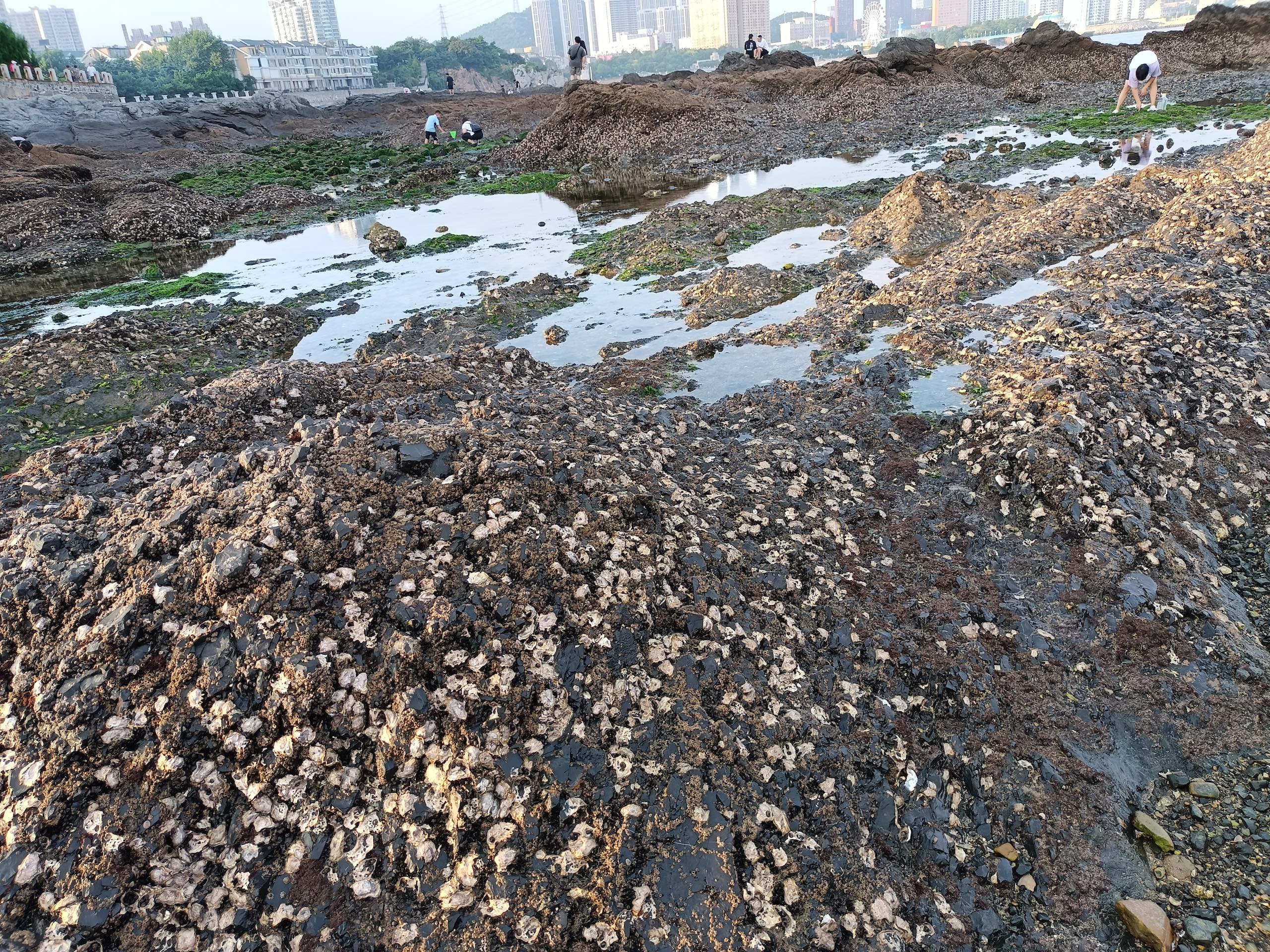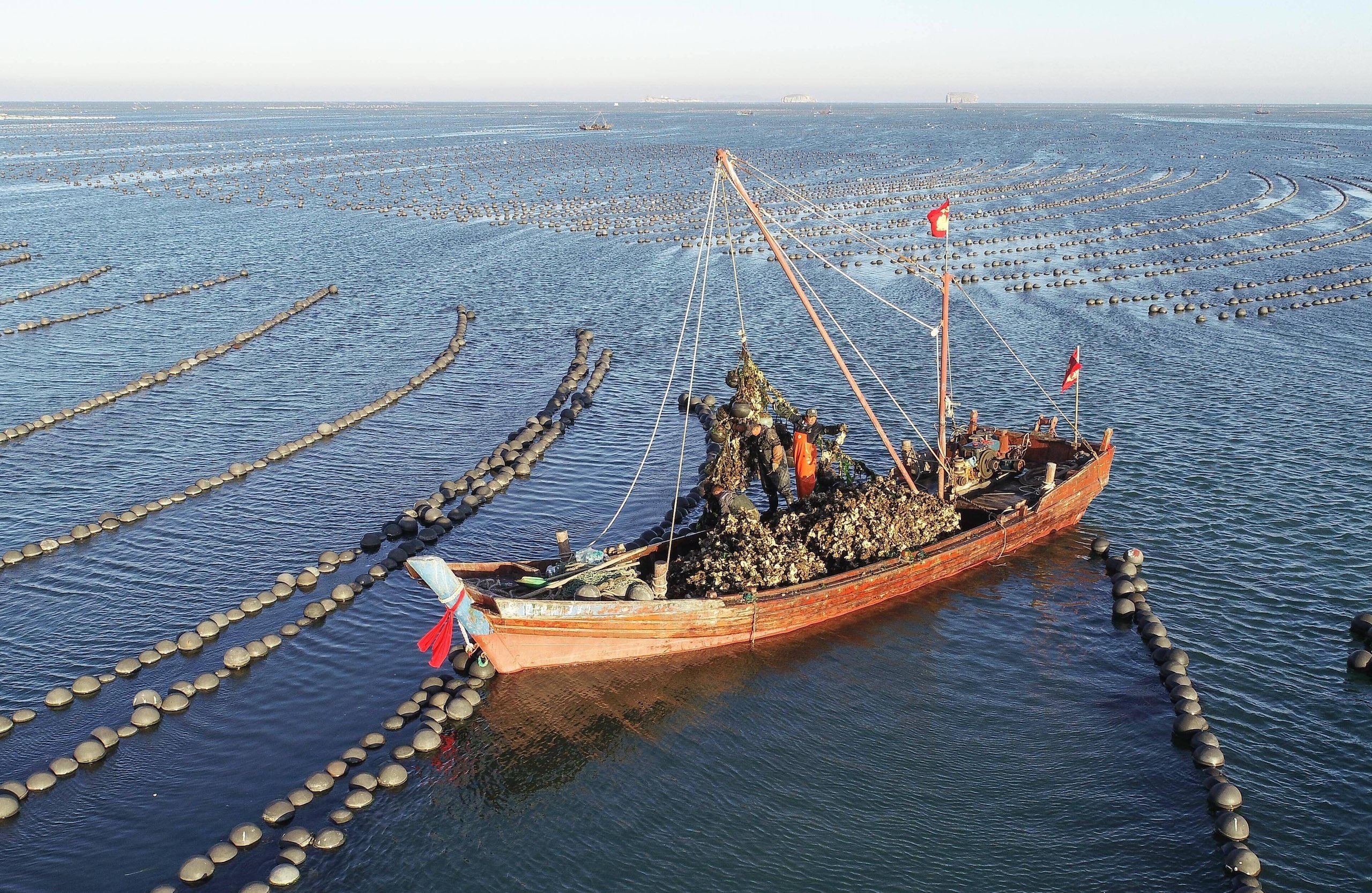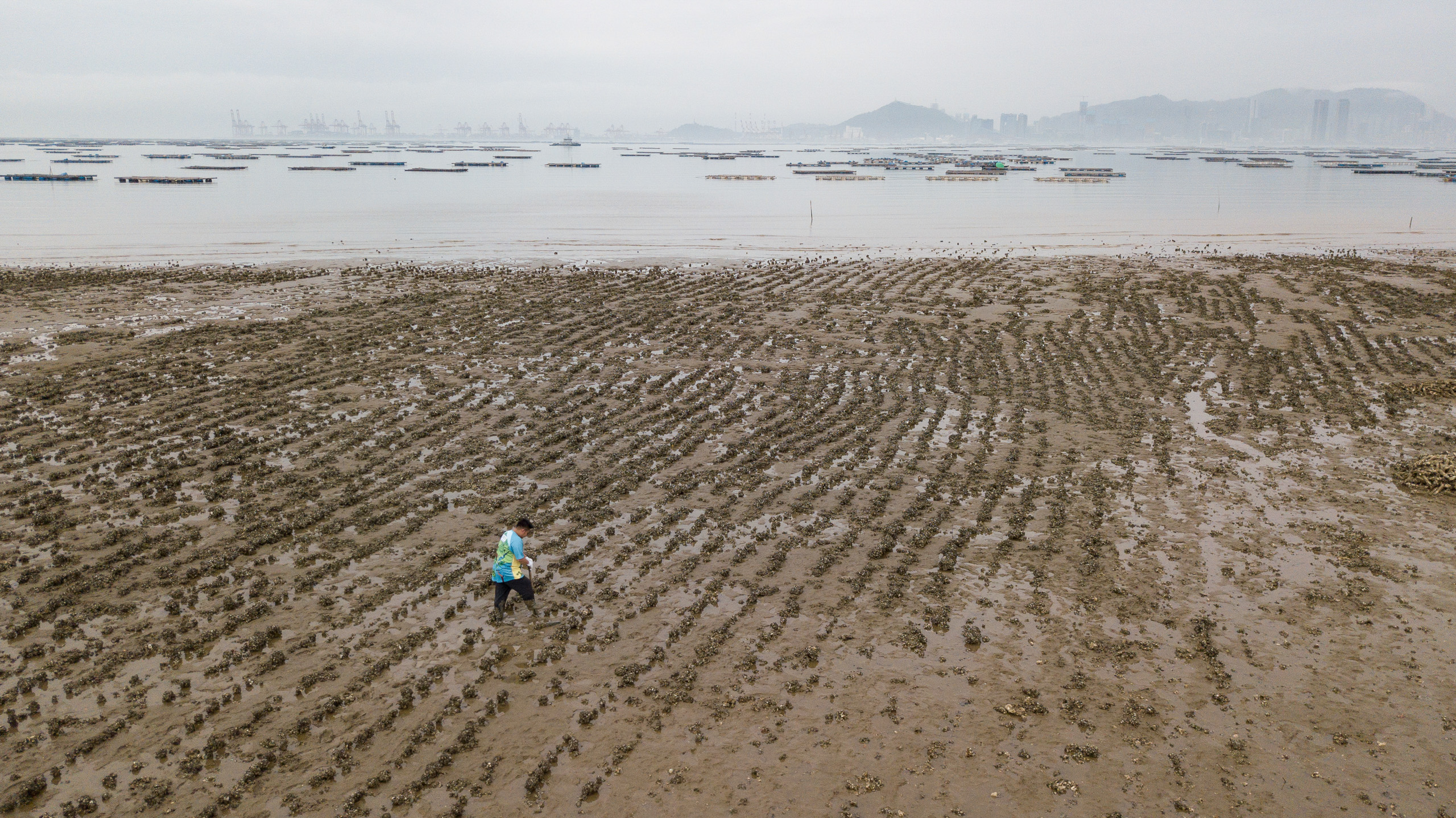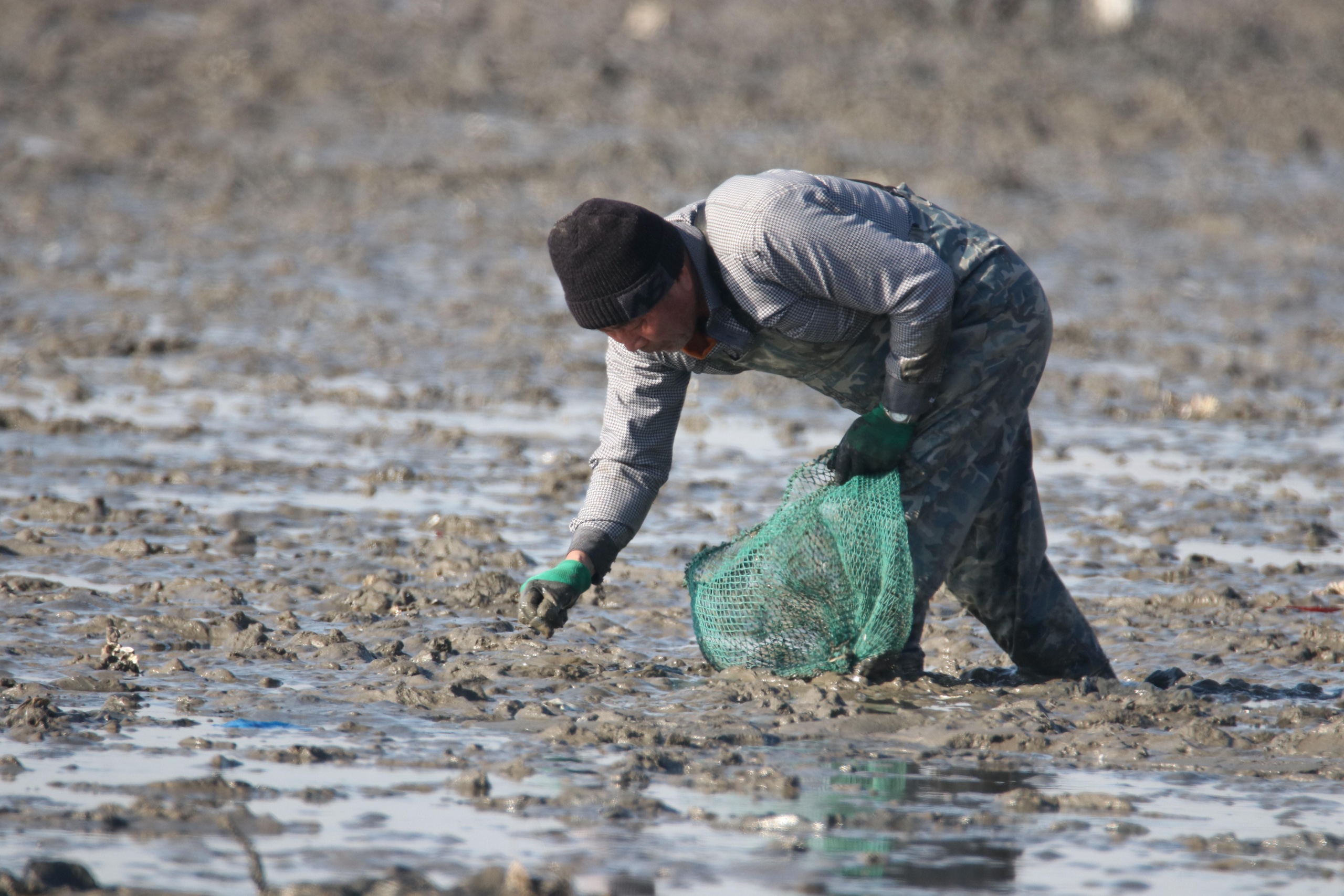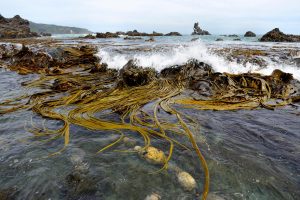Oysters, a favourite of seafood aficionados, cannot propagate without reefs to grow on.
Though unremarkable in appearance, oyster reefs – craggy formations encrusted with oyster shells – provide important habitats for marine animals.
The algae, plankton, fish and shrimp they shelter help to keep the water clean and store carbon. As reefs expand, they help break the force of waves and storm surges.
For residents of seaside cities, meanwhile, they bring the fun of combing the foreshore for shellfish and crustaceans.
However, naturally formed oyster reefs face a precarious existence, with around 85% of them having disappeared globally, according to a 2011 study. China is no exception, and while the country has established special protected areas and rolled out restoration efforts for these reefs, results to date have been limited.
Experts interviewed by Dialogue Earth say China needs better high-level planning and more research, technology and public participation if it is to preserve and restore its oyster reefs.
Natural oyster reefs clinging on
At present, high-level data on the condition of China’s natural oyster reefs is very limited. Most of the available information focuses on several local areas.
For example, Chinese researchers have found natural oyster reefs in the estuaries and coastal reaches of Tianjin, Jiangsu, Shandong, Fujian and Guangdong. All of these have experienced sharp reductions in size or gone into functional decline when compared with the limited historical record. In some areas, reefs have degraded by as much as 70-90%.
Human factors, including overfishing, pollution and pollution-induced diseases, modification of coastal areas, has led to the depletion, and, in some cases, disappearance of natural oyster reefs.
Oysters can only survive within certain thresholds of salinity, temperature, sand content and acidity. Water depth, tidal levels and sea-current speed all influence how they attach, and how reefs form. Ocean warming and acidification related to climate change harm the health of oyster reefs, and land-based sewage discharges cause further damage.
China still has some naturally thriving oyster reefs, but they are under threat and do not receive the attention they merit.
Oyster reefs in the waters of south Dalian, Liaoning province, are one example. Ren Zengying, from the Marine Industry Development Promotion Association of Dalian, has been studying the area’s coastal wetlands since 2018. She told Dialogue Earth that, while delighted by the presence of naturally forming oyster reefs, she was also concerned that those in open waters “are facing a new wave of destruction, with some in the intertidal zone being harvested to the point of functional extinction.”
Conservation predicament
Though these natural oyster reefs are managing to survive in a changing environment, they are in dire need of protection.
They may be highly fragile and, on account of their isolation, may find it hard to breed and recover from disease and other external habitat disturbances. At the same time, the protection and ongoing observation of such reefs, to understand how they propagate and expand, can complement existing research and help scientists to develop restoration techniques.
To protect oyster reefs, then, the priority is limiting nearby human activity and keeping threats at bay.
With this in mind, China has since 2006 established two national protected areas dedicated to oyster reef conservation. One encompasses the tidal island of Liyashan in Haimen, Jiangsu province, and the other is the Dashentang coast in Tianjin. Both had an abundance of natural oyster reef resources about 20 years ago, before they were damaged by natural and human causes. Development in both locations has been tightly restricted by the government since the protected areas were set up, and programmes for restoration and long-term monitoring are underway.
Conserving the reefs brings practical challenges. Constraints on funding, staffing numbers and natural resource management skills pose problems for the protected areas, as Quan Weimin, a Chinese Academy of Fishery Sciences scholar who has spearheaded multiple oyster reef protection and restoration projects in China, has noted.
The sea at Dashentang, for example, is routinely patrolled by the local marine surveillance team but due to these constraints, it had no dedicated management office as of 2022, according to a study. Meanwhile, discharges of cooling water from a nearby power plant have been affecting seawater temperature and current speed in the area. These factors limit the effectiveness of oyster reef conservation.
Ren Zengying maintains that limiting human activity is the right approach for protecting oyster reefs off the Dalian coast. She says that, first, the status of natural reefs in the area must be assessed; then, the authority can more rigorously manage the ecosystems, such as by making them a marine ecological redline area.
❌ The redlines demarcate areas with important ecological functions, including coastal waters, wetlands, glaciers and forests.
🌳 Their aim is to protect these habitats and their species, while making gains for flood and sandstorm prevention, clean water provision and other ecosystem services.
Restoration is hard
Conserving oyster reefs is extremely challenging, and restoration is not a simple matter.
Restoration has been piloted elsewhere in the world, and guidelines have developed accordingly. The US was an early mover: work to restore oyster reefs in New York Harbour began in the 1990s, and the whole area is now dotted with recovered sites.
In 2011, US federal and state governments threw their weight behind work to restore oysters down the coast in Chesapeake Bay, Washington, resulting in the restoration of 142 hectares of reefs over the following eight years. Similar projects are currently underway in Australia and the Netherlands.
In most such cases, artificial reconstruction and oyster restocking have been the main approaches.
Proper restoration requires thorough planning and attention to detail. Local ecological conditions must be surveyed, and threats identified, before restoration work can begin. Then comes developing a bespoke restoration programme and selecting species suitable for placement, along with crafting substrates to support the reef’s growth.
Once the oysters are in place, specialists are needed for continuous reef monitoring and maintenance. Their work includes promptly removing invasive species, sediment and debris that might interfere with oyster propagation; preventing reefs from being destroyed by human activity; and remediating any damage from extreme weather events.
Restoration projects do not happen overnight. The relevant financial, technical and human resources are generally required for around 10 years.
China has been accumulating experience in this area for over a decade. Aside from carrying out restoration works in the two protected areas, researchers are exploring possible projects in the estuaries, bays and harbours of coastal cities including Tangshan, Dongying, Weifang and Taizhou.
Restoration projects don’t just aim at rebuilding reefs or increasing oyster populations. Some larger-scale projects are geared toward restoring the vitality and diversity of coasts. Their success often depends on making the most of oyster reefs’ ecosystem services.
For example, in 2021, China launched a plan for the country’s first land–sea integrated national park, the Yellow River Mouth National Park, which includes a 1,500-hectare oyster reef restoration project. The intention is for the oyster reefs to act as a natural barrier protecting the estuary coastline.
Support from many quarters
China’s simultaneous push for conservation and restoration has not reversed the degradation of natural oyster reefs. Tackling the problem will require high-level changes in approach.
Oyster reefs are not covered in China’s marine environment protection law, or in medium-to-long-term national planning for environmental protection and restoration. Compared with mangrove forests, they receive far less national financial support. Regional governments, therefore, have little incentive to protect oyster reefs. By the same token, a lack of relevant regional laws relating to the reefs limits the provision of supporting resources and makes coordination difficult.
In recent years, a number of experts in China have called for the strengthening of planning and policies relating to oyster reefs. Recommendations include a national-level action plan for their protection and restoration; bringing natural reefs under ecological redlines to stave off human disturbance; and conducting a full national survey to establish the status of living, naturally formed reefs.
Public involvement is also crucial for conserving and restoring natural oyster reefs. The civil society body which Ren Zengying belongs to is running an education initiative in Dalian on conserving the reefs. “Public awareness of oyster reef ecosystems is extremely low,” Ren observes. “A social campaign on marine matters should bring more attention to oyster reefs and related ecosystems.”


